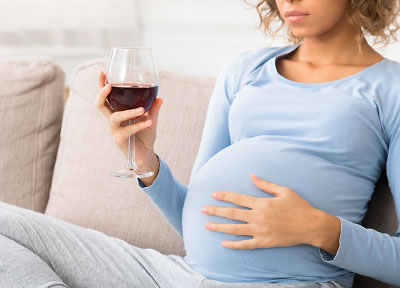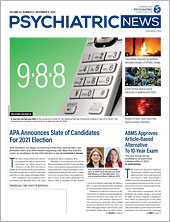Making use of detailed information from a large, nationwide cohort of children, two new studies have provided more evidence of the adverse effects of alcohol and cannabis use during pregnancy. Consistent with previous findings in smaller groups, these new analyses found that prolonged exposure to either substance in the womb was associated with numerous behavioral, social, and attention problems in children.
The research also showed that even just a couple of drinks a week during the first few weeks of pregnancy—before women even know they are pregnant—has potentially harmful effects on children’s behavior.
Both studies showcase the value of the data trove that is the Adolescent Brain and Cognitive Development (ABCD) study—the National Institutes of Health (NIH) initiative that will track the brain development of over 11,000 children from across the United States beginning at age 9 to 10 years into adulthood. Though this longitudinal study is still in the early stages, investigators have already used the baseline data provided by the participants to make important discoveries. Upon enrolling in ABCD, children and their families completed a range of medical, psychological, and cognitive surveys, and the children also received detailed brain scans.
The alcohol exposure study, which was led by a team at the University of Sydney, Australia, and published in AJP in Advance, included data from 9,719 ABCD participants who had detailed family data on alcohol use. Of these children, more than one-quarter (2,518) were exposed to some amount of alcohol in the womb. Compared with children with no alcohol exposure, those with any exposure had, on average, greater emotional and behavioral problems and greater impulsivity. Also, they were more likely to have received a diagnosis of separation anxiety disorder or oppositional defiant disorder.
These differences remained even after adjusting for demographic and health variables, such as the mother’s age while pregnant, family history of depression, and the use of other substances.
The researchers next grouped the children based on their mothers’ drinking habits during pregnancy: abstinent; light drinking during early pregnancy (defined as the first seven weeks of pregnancy, before the mothers became aware they were pregnant); light drinking throughout pregnancy; and heavy drinking during early pregnancy.
(Women who drank heavily throughout pregnancy or those who started with light drinking but then increased over time each comprised less than 1% of the sample and were excluded from the group analysis.)
The researchers found that the greater the amount of alcohol exposure that children had in the womb, the greater the range of problems they exhibited. For example, children whose mothers were light drinkers (about two drinks a week) or heavy drinkers (about five drinks a week) during early pregnancy were more likely to have emotional or behavioral problems compared with those whose mothers abstained from alcohol. But children whose mothers drank heavily during early pregnancy were more likely to also show aggressive behaviors and withdrawn or depressed behavior and to have a diagnosis of attention-deficit/hyperactivity disorder.
While increased alcohol exposure led to more risks, the authors emphasized “that children with even the lowest levels of exposure demonstrate poorer psychological and behavioral outcomes as they enter adolescence” compared with those with no alcohol exposure.
“[O]ur results suggest that there is no safe threshold for alcohol consumption during pregnancy,” they wrote.
Interestingly, the related analysis looking at the effects of cannabis exposure in the womb on children’s behavior—this one published in JAMA Psychiatry—was less conclusive on the risks of cannabis use during early pregnancy; however, there was a higher risk for behavioral disorders in offspring associated with later maternal cannabis use. As with the other study, researchers at Washington University in St. Louis compared ABCD participants’ scores on behavioral and emotional assessments relative to their mother’s cannabis use during pregnancy—again dividing women based on whether they stopped or continued to use cannabis once they found out that they were pregnant.
The study was based on data from 11,489 children and their parents. Overall, cannabis use during pregnancy was less prevalent than alcohol use, with 5.7% of ABCD mothers reporting any use, the majority of whom stopped once they learned they were pregnant.
Compared with children of mothers who did not use cannabis, children exposed to cannabis at any point during pregnancy had more problems with social behavior, attention, cognition, and sleep. After adjusting for other variables including demographics and health, however, only cannabis use after becoming aware of pregnancy remained associated with adverse outcomes in the children.
Senior study author Ryan Bogdan, Ph.D., an associate professor of psychological and brain sciences at Washington University, said the likely explanation for the lack of a direct link between cannabis use in early pregnancy and adverse outcomes in children is that the main biological targets of cannabis—endocannabinoid receptors—are not expressed in the developing brain until the fifth or sixth week of pregnancy.
“But while we did not find an independent association between early cannabis use and psychiatric problems in children, it does not mean cannabis use during early pregnancy is risk free,” said Bogdan. “We don’t know enough details to make any firm conclusions.
“It is possible that cannabis use for the first few weeks of pregnancy might have minimal impact,” he continued. “But pregnancy is a stressful period, and it can be harder to quit a substance during, rather than before, pregnancy.”
Until more studies are completed, Bogdan said that physicians and medical cannabis dispensaries should follow the same guidance that is given for alcohol and tobacco and discourage any cannabis use during pregnancy.
The ABCD Study is funded by several grants from NIH and federal partners including the Centers for Disease Control and Prevention, National Science Foundation, National Institute of Justice, and National Endowment for the Arts. ■
“Association of Prenatal Alcohol Exposure With Psychological, Behavioral, and Neurodevelopmental Outcomes in Children From the Adolescent Brain Cognitive Development Study” is posted
here.
“Associations Between Prenatal Cannabis Exposure and Childhood Outcomes: Results From the ABCD Study” is posted
here.

